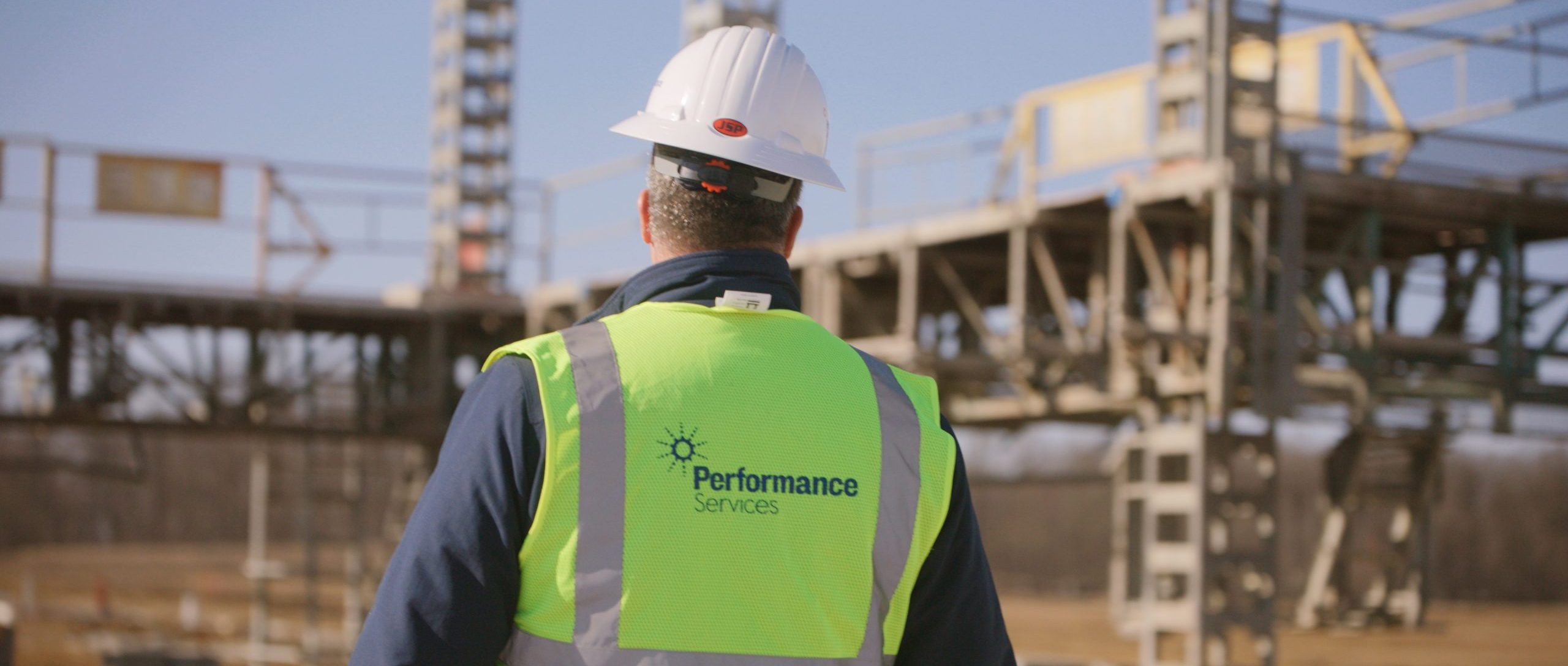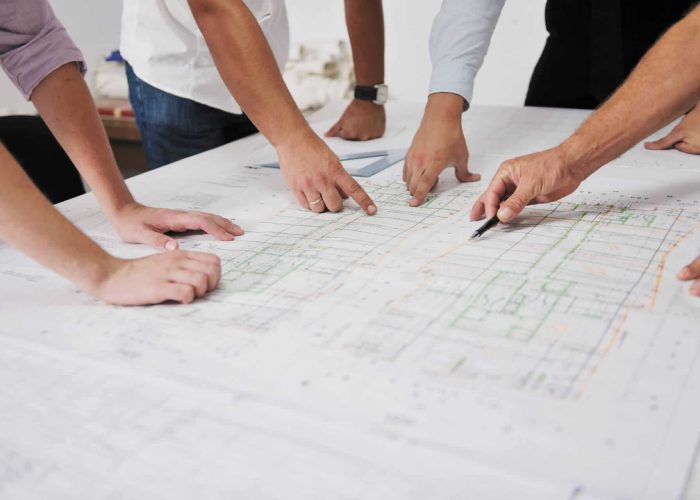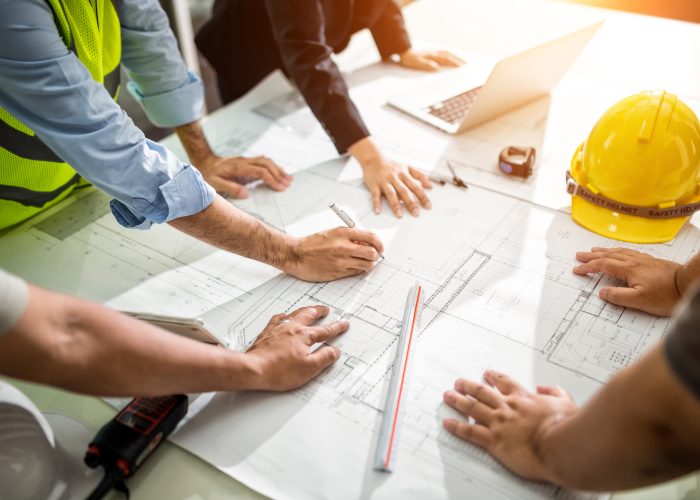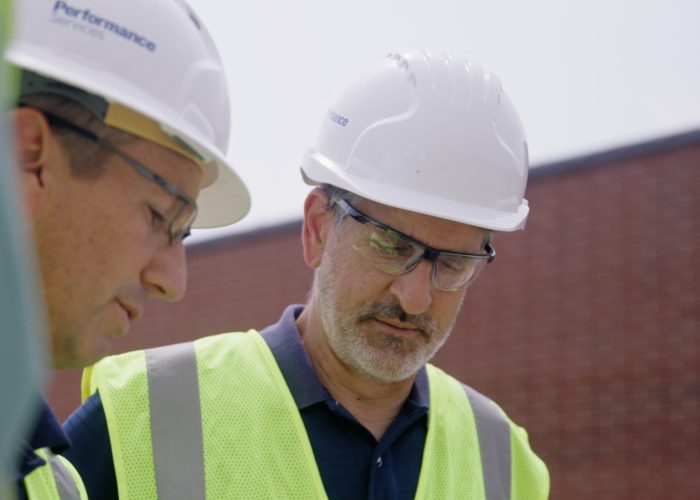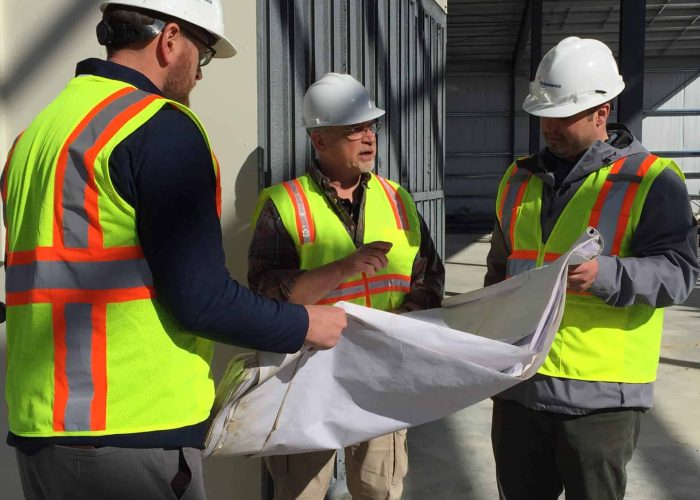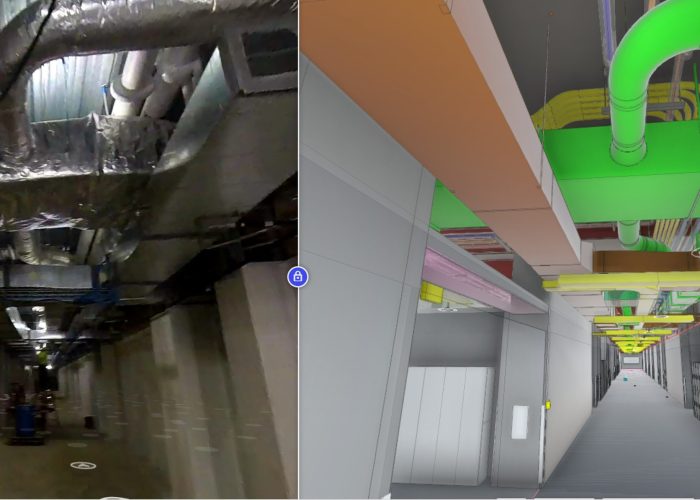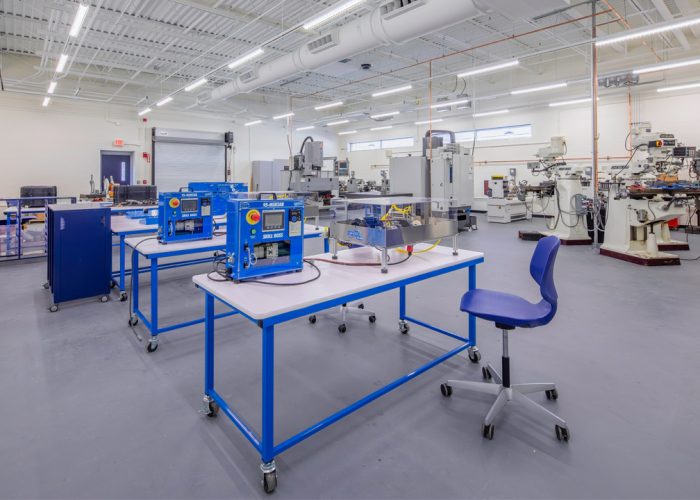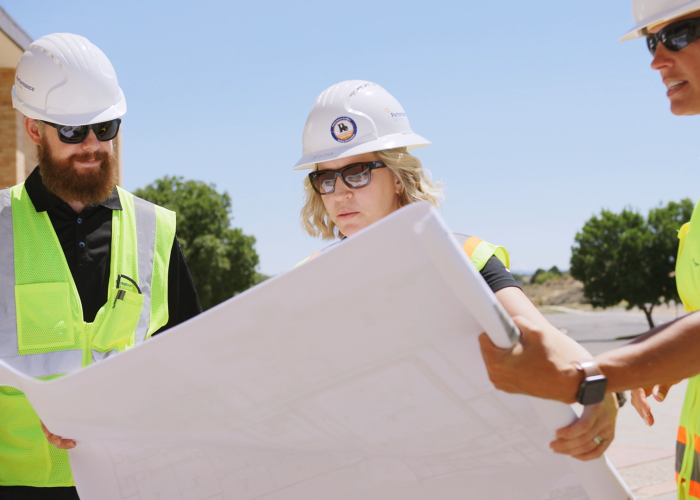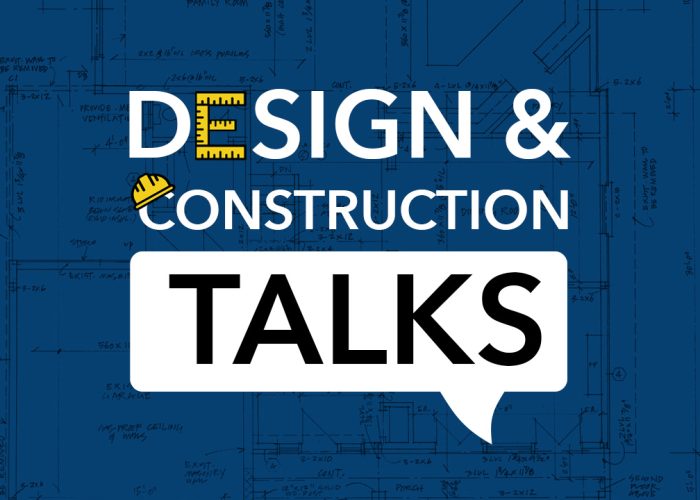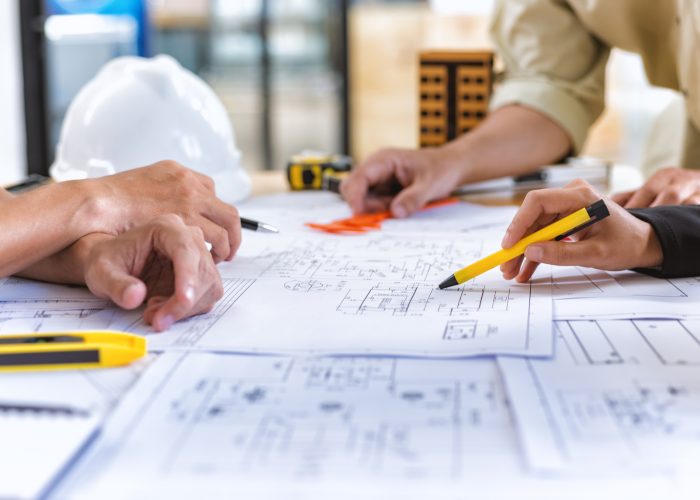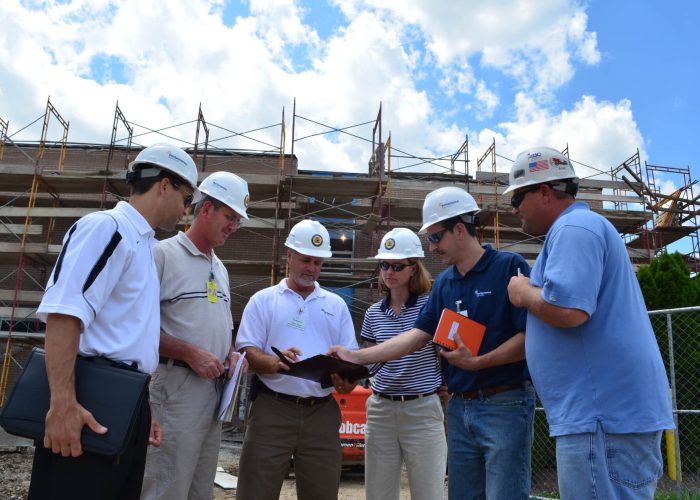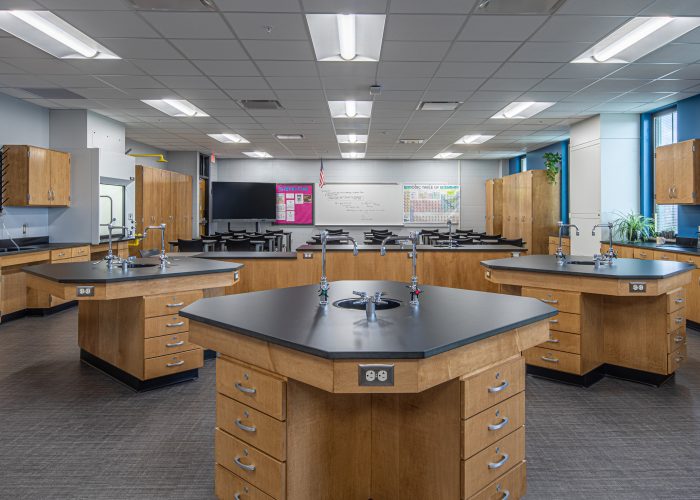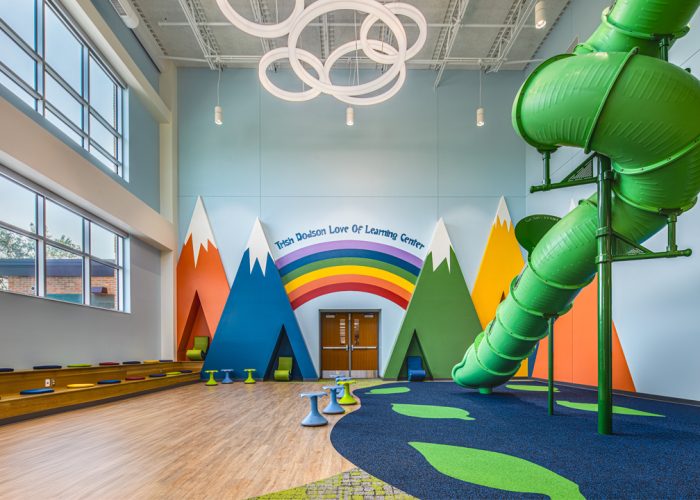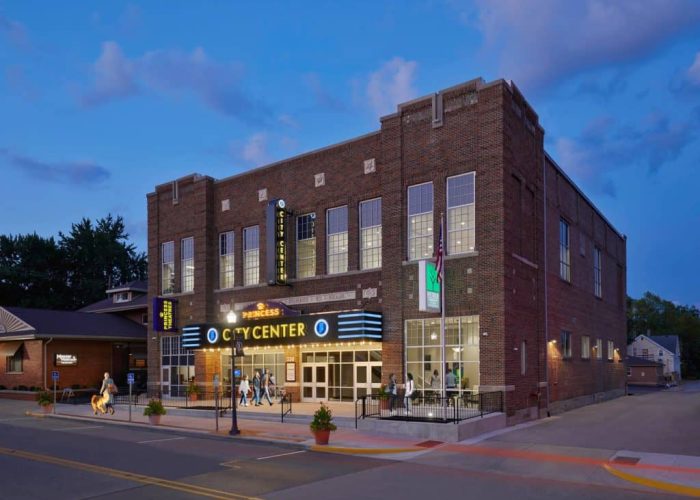Design-Build Construction
Design-build construction ensures accountability and commitment to the project’s success from day one.
Design-Build Construction
Design-build construction is a project delivery method in which one entity is contractually accountable for both the design and construction phases of a new build or renovation project. This method streamlines communication, reducing project timelines and aligning budgets from the start. In municipal and education sectors, this approach minimizes disruptions, accelerates schedules, and ensures that projects are completed on time and within budget—key priorities when working with taxpayer funds or academic calendars.
Performance Services utilizes design-build procurement to deliver high-quality, energy-efficient, and cost-effective infrastructure improvements. Performance Services takes sole accountability, managing every aspect from concept to completion. Integrating architects, engineers, and construction managers into one collaborative team provides clients with a seamless process that leverages innovation and produces measurable results.
Performance Services offers a no-change-orders guarantee tied to the agreed scope and final pricing. This is only possible due to a single contract, eliminating potential disputes and owner liability that can occur with multiple contracts.
Design-Build vs Traditional Construction (Design-Bid-Build)
Design-build construction differs from other construction methods due to the way the project is procured. In traditional construction, like design-bid-build, the design and construction phases are handled by separate entities with separate contracts. The owner first hires an architect or engineer to complete the design on a contract. Secondly, after a competitive bidding process, the owner hires a construction manager to function under a different contract. Because the designer and builder are contracted independently, they have no formal obligation to collaborate, leading to gaps in communication, differing priorities, and finger-pointing when problems arise. This separation often results in longer timelines, higher costs, change orders, and disputes over design intent versus constructability.
Design-bid-build is often referred to as ‘plan and specification’ because it puts the owner in charge and liable for managing the designers, general contractors, and specialty contractors. This process can be taxing and stressful for the client, requiring a substantial amount of time. The owner’s role is to manage the architects and designers, ensuring they remain accountable to the project as a whole.
In contrast, design-build combines planning, design and construction with a single entity, utilizing a one team from start to finish. Whereas design-bid-build limits cross-team collaboration, design-build encourages a win-win approach among designers, engineers, builders, and the client.
A unified approach accelerates schedules, improves communication, and aligns the project vision with the budget from the beginning. Design-build often results in greater efficiency, reduced risk, and a smoother overall experience compared to traditional segmented construction processes.
Discover more about the history of design-build and its comparison to traditional methods.
Design-Build vs Construction Management at Risk (CMAR or CMc)
While both CMAR and design-build are alternatives to the traditional design-bid-build approach, they differ in how risk, accountability, and collaboration are structured. In CMAR, the owner hires a designer separately and then brings in a construction manager during the design phase. The construction manager provides cost estimates and constructability input, but does not control the design. This often leaves the owner acting as the middle link between the designer and builder, which can create misaligned priorities or constructability issues. Due to the legal principle of the Spearin Doctrine, the owner is responsible for the project’s financial risk in the construction phase, not the construction manager as it relates to design errors, omissions or constructability.
In contrast, design-build consolidates planning, design and construction under a single contract with one accountable partner. Instead of managing separate contracts and mediating between design and construction teams, the owner works directly with a unified team. This integration enhances collaboration, directly ties design decisions to budget and schedule, and minimizes the risk of gaps or conflicts. For public owners, this means more transparent communication, reduced administrative burden, and a smoother path to project completion.
Performance Services takes the design-build approach further by guaranteeing results that matter most to public owners, delivering projects on time, within budget, and without change orders. Beyond construction, our team provides performance assurance, monitoring, and long-term support to ensure facilities operate as promised. By choosing Performance Services, owners gain not only a design-build partner but also a dedicated advocate committed to protecting taxpayer dollars and delivering lasting community value.
Learn more about design-build vs construction management at risk.
Design-Build and Owner Control
Procurement in design-build construction is based on owner control and transparency. Owner control means that the client has the power to drive design priorities and select the contractors they want to work with and determine the project’s goals. The owner makes the final decisions, but the design builder manages the relationships.
Other construction delivery methods, such as design-bid-build or construction manager at risk (CMAR), separate the design and construction teams, creating silos and divided accountability. In these models, design is largely complete before trade pricing is finalized, which can lead to budget overruns, change orders, and reduced owner flexibility to make changes once construction begins. While CMAR introduces a contractor earlier in the process, it still involves multiple contracts and fragmented responsibilities.
By contrast, design-build integrates architectural design, engineering, and construction under a single contract with one accountable partner. This unified approach promotes collaboration, transparency, and a design-to-budget process that delivers predictable outcomes. Instead of being driven by low-bid procurement, design-build prioritizes value, quality, and owner goals, ensuring alignment from concept through completion.
At Performance Services, procurement works differently. A client-first approach is at the core of every project. The team manages the bidding process to confirm that contractors are qualified and that the overall budget remains intact, but the ultimate choice always belongs to the client. Through an open-book pricing guarantee, every cost is fully transparent and shared, giving clients clear visibility into how their dollars are spent. There are no hidden markups, no surprises, and no change orders—guaranteed. Most importantly, clients are free to select the contractors they trust, choosing based on workmanship, reputation, or community presence rather than simply the lowest price. This empowers clients to have vendor independence throughout the whole project, keeping clients in control of their equipment, materials, building automation platforms, and, most importantly, their projects.
Design-Build Process Explained
First, design-build projects start by defining the client’s priorities. The owner determines project goals, which include budget parameters and schedule expectations. The owner sets the vision and priorities, and the design-build partner takes responsibility for shaping them into a workable plan, always keeping top priorities in mind.
Second, the client will select one design-build team to work with. The design-builder handles design and construction rather than hiring separate entities. This step often involves a qualifications-based selection, ensuring the client has all the information needed to choose a team with the right expertise and a proven track record. The process varies from state to state, depending on legislation.
After selecting a design-builder, the team and owner work on design development. From day one, the owner works alongside the design-build partner as the design is created. The owner should provide input, review options, and decide on the project’s direction. This means fewer surprises later, since design choices are directly tied to budget and constructability.
Finally, construction begins with continuous communication. The design-build team manages all coordination, subcontractors, and day-to-day progress throughout the construction process. The client stays informed through regular updates and progress meetings, but the risk and responsibility remain with your design-build partner.
Lastly, at project completion, the owner will receive a facility that aligns with their original goals, delivered on time and within budget. Performance Services remains with customers after the project is completed, giving performance assurance support and monitoring to ensure optimal performance results.
Design-Build Construction Companies
Design-build construction companies are specialized firms that unite architects, engineers, and builders as one cohesive team. Rather than simply offering a delivery method, these companies serve as a single source of accountability—guiding owners through planning, design, budgeting, construction, and even post-project support. The strength of a design-build firm lies in its ability to foster collaboration, streamline communication, and align all disciplines toward the owner’s goals. By working with an experienced design-build company, public owners can benefit from an efficient project process and a partner committed to the project’s long-term performance and community impact.
Choosing Performance Services means partnering with a design-build company that goes beyond delivering projects on time and within budget. We provide cost and performance guarantees, no change orders within the agreed to scope based on final bids and pricing, and long-term support through monitoring and assurance services. Our team is committed to building lasting relationships with public owners by focusing on transparency, collaboration, and measurable results that serve communities for decades to come. Contact us to get started and learn more about how we can help your K-12 schools, higher education institutions, or government facilities.
Design-Build Pros and Benefits
One of the most significant advantages of design-build is the simplicity of having a single partner responsible for both design and construction. Owners avoid the finger-pointing and gaps that can arise when managing multiple contracts. This consolidated accountability reduces administrative burden and allows communication to flow more efficiently, providing the owner with a single clear point of contact throughout the project.
Because design and construction are integrated from the start, budgets and schedules are developed in real-time as design decisions are made. This proactive alignment minimizes unexpected costs, accelerates delivery, and helps projects stay on track. With fewer delays and change orders, owners gain confidence that their projects will be delivered on time and within budget.
Explore ten reasons why the design-build delivery method works for education and municipal projects.
Design-Build Cons and Challenges
Some owners worry that design-build give too much authority to one entity, limiting their control in the process. In reality, the opposite is true: design-build encourages collaboration from day one. Owners remain deeply involved and in control to shape the project vision, priorities, and decisions, while the design-build partner takes responsibility for translating those goals into a successful outcome. This balance gives owners influence without the stress of managing separate contracts.
Another perceived drawback is the lack of a separate architect and contractor to “check” each other. In practice, design-build replaces that adversarial setup with alignment. The design and construction teams are incentivized to solve problems together, not push responsibility onto one another. For owners, this translates into fewer disputes, faster decisions, and a smoother project experience with a single partner accountable for both design quality and construction results.
Read more about other common design-build myths.
Design-Build Projects
Design-build projects can take many forms, from new construction and major renovations to infrastructure upgrades and energy efficiency improvements. Each project is tailored to meet the owner’s specific goals. The design-build approach allows for flexibility and collaboration at every stage.
For public owners, design-build projects are especially valuable because they simplify a traditionally complex process. Cities, counties, school districts, and universities often face strict budget requirements and oversight, making cost certainty and transparency essential. With a single contract and one accountable partner, public entities can avoid costly delays, reduce administrative burden, and ensure taxpayer dollars are used responsibly. Design-build also supports community-focused outcomes, delivering facilities and infrastructure that serve students, residents, and future generations more effectively.
See how Avon Community Schools demonstrated fiscal responsibility—completing district-wide renovations and a new facility without increasing taxes.
Design-to-Budget: Smarter Planning, Better Outcomes
At Performance Services, we take a proactive design-to-budget approach that ensures every project is designed with the budget in mind from day one. Instead of waiting until after design to “value engineer” scope and quality out of the project—as often happens under CMAR—our integrated design-build team continuously aligns cost, scope, and design decisions throughout development.
Our collaborative process engages key trade partners early and uses real-time market data to inform design choices. This means owners gain confidence that every dollar is purposefully invested where it adds the most value.
The result: a project that meets both program goals and budget expectations without the compromises and rework typical of reactive cost-cutting later in the process.
Transparency is central to our approach. Through our proven open-book pricing process, clients have full visibility into costs and decision-making, fostering trust and accountability from concept through completion.
